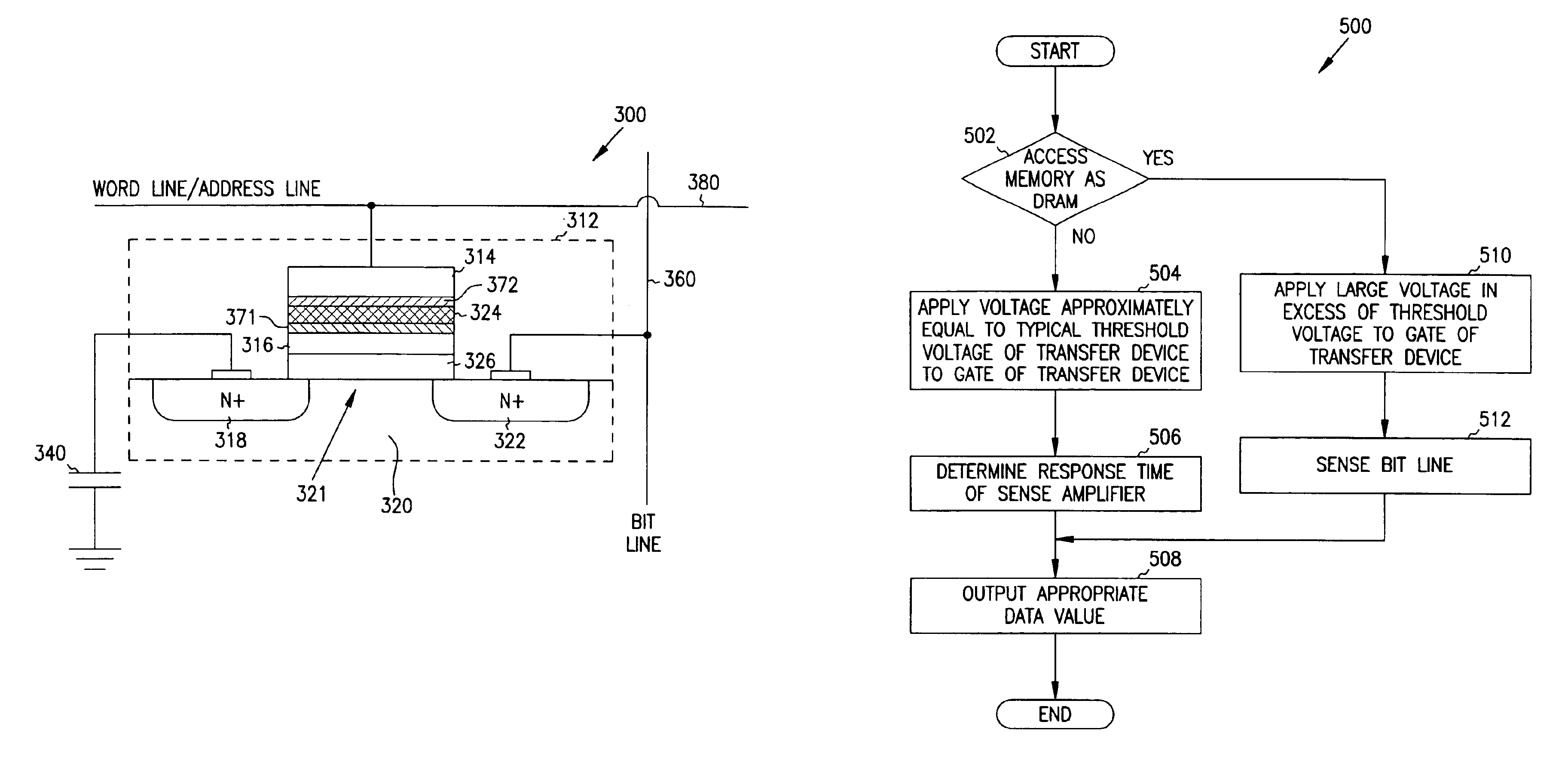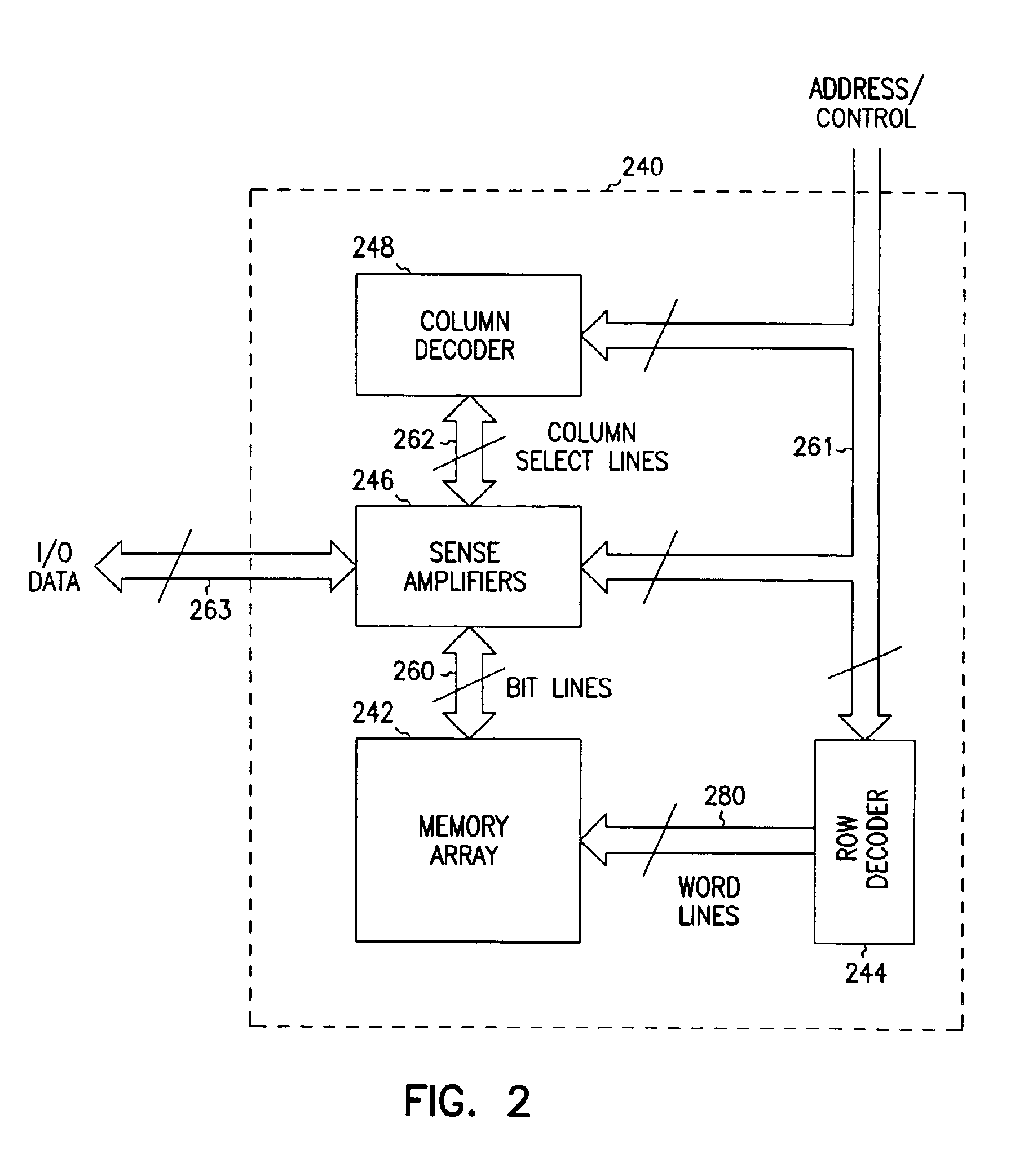DRAM cells with repressed floating gate memory, low tunnel barrier interpoly insulators
a floating gate memory, dram cell technology, applied in the field of integrated circuits, can solve the problems of loss of all knowledge of the state limited memory longevity, and constant refreshing of the dram devi
- Summary
- Abstract
- Description
- Claims
- Application Information
AI Technical Summary
Benefits of technology
Problems solved by technology
Method used
Image
Examples
example i
Formation of PbO Tunnel Barriers
[0105]This oxide barrier has been studied in detail using Pb / PbO / Pb structures. The oxide itself can be grown very controllably on deposited lead films using either thermal oxidation or rf sputter etching in an oxygen plasma. It will be seen that there are a number of possible variations on this structure. Starting with a clean poly-Si substrate, one processing sequence using thermal oxidation involves:
[0106](i) Depositing a clean lead film on the poly-Si floating gate at ˜25 to 75C in a clean vacuum system having a base pressure of ˜10−8 Torr or lower. The Pb film will be very thin with a thickness within 1 or 2A of its target value.
[0107](ii) Lead and other metal films can be deposited by various means including physical sputtering and / or from a Knudsen evaporation cell. The sputtering process also offers the ability to produce smoother films by increasing the re-sputtering-to-deposition ratio since re-sputtering preferentially reduces geometric hig...
example ii
Formation of Al2O3 Tunnel Barriers
[0111]A number of studies have dealt with electron tunneling in Al / Al2O3 / Al structures where the oxide was grown by “low temperature oxidation” in either molecular or plasma oxygen. Before sketching out a processing sequence for these tunnel barriers, note:
[0112](i) Capacitance and tunnel measurements indicate that the Al2O3 thickness increases with the log (oxidation time), similar to that found for PbO / Pb as well as a great many other oxide / metal systems.
[0113](ii) Tunnel currents are asymmetrical in this system with somewhat larger currents flowing when electrons are injected from Al / Al2O3 interface developed during oxide growth. This asymmetry is due to a minor change in composition of the growing oxide: there is a small concentration of excess metal in the Al2O3, the concentration of which diminishes as the oxide is grown thicker. The excess Al−3 ions produce a space charge that lowers the tunnel barrier at the inner interface. The oxide compos...
example iii
Formation of Single- and Multi-layer Transition Metal Oxide Tunnel Barriers
[0119]Single layers of Ta2O5, TiO2, ZrO2, Nb2O5 and similar transition metal oxides can be formed by “low temperature oxidation” of numerous Transition Metal (e.g., TM oxides) films in molecular and plasma oxygen and also by rf sputtering in an oxygen plasma. The thermal oxidation kinetics of these metals have been studied for decades with numerous descriptions and references. In essence, such metals oxidize via logarithmic kinetics to reach thicknesses of a few to several tens of angstroms in the range of 100 to 300C. Excellent oxide barriers for Josephson tunnel devices can be formed by rf sputter etching these metals in an oxygen plasma. Such “low temperature oxidation” approaches differ considerably from MOCVD processes used to produce these TM oxides. MOCVD films require high temperature oxidation treatments to remove carbon impurities, improve oxide stoichiometry and produce recrystallization. Such high...
PUM
 Login to View More
Login to View More Abstract
Description
Claims
Application Information
 Login to View More
Login to View More - R&D
- Intellectual Property
- Life Sciences
- Materials
- Tech Scout
- Unparalleled Data Quality
- Higher Quality Content
- 60% Fewer Hallucinations
Browse by: Latest US Patents, China's latest patents, Technical Efficacy Thesaurus, Application Domain, Technology Topic, Popular Technical Reports.
© 2025 PatSnap. All rights reserved.Legal|Privacy policy|Modern Slavery Act Transparency Statement|Sitemap|About US| Contact US: help@patsnap.com



